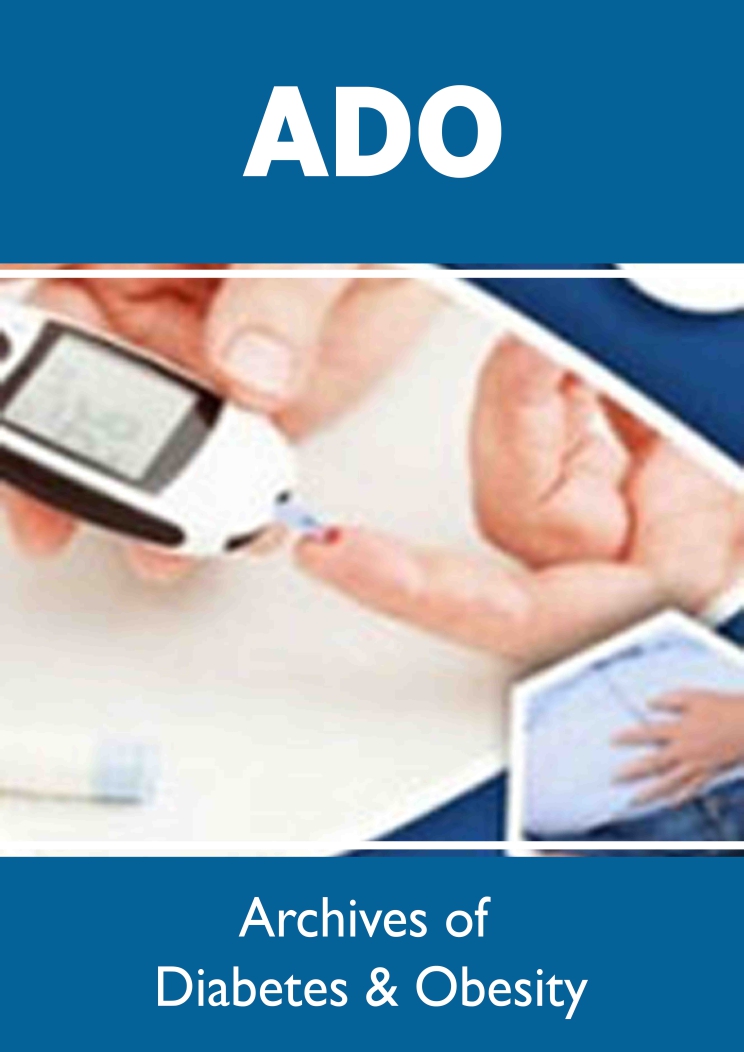-
Review ArticleView abstract
 PDF
PDF
 Full text
Obesity is a chronic multifactorial disease characterized by the excessive accumulation of body fat. It increases the risk of other chronic metabolic diseases (e.g., metabolic syndrome, diabetes, cardiovascular diseases, and infertility) and cancer. The global prevalence of obesity is estimated to be 22.4%, and Mexico has one of the highest rates compared to other countries [1]...... ReadMore
Full text
Obesity is a chronic multifactorial disease characterized by the excessive accumulation of body fat. It increases the risk of other chronic metabolic diseases (e.g., metabolic syndrome, diabetes, cardiovascular diseases, and infertility) and cancer. The global prevalence of obesity is estimated to be 22.4%, and Mexico has one of the highest rates compared to other countries [1]...... ReadMore -
Research ArticleView abstract
 PDF
PDF
 Full text
Conflicting data and reports exist on walnut effects on weight management and diabetes control. This experimentally-controlled nutritional study examined the effects of African black walnut (Plukenetia conophora) on weight and diabetes control in experimental diabetic male Wistar rats. The impacts of African black walnut on body weight gain, glycemic tolerance and lipoglycemic profile were evaluated in this study..... ReadMore
Full text
Conflicting data and reports exist on walnut effects on weight management and diabetes control. This experimentally-controlled nutritional study examined the effects of African black walnut (Plukenetia conophora) on weight and diabetes control in experimental diabetic male Wistar rats. The impacts of African black walnut on body weight gain, glycemic tolerance and lipoglycemic profile were evaluated in this study..... ReadMore -
OpinionView abstract
 PDF
PDF
 Full text
Opinion Diabetes mellitus (DM) is a chronic metabolic disease characterized by high blood glucose levels and has been an increasing world health problem. It is one of three non- communicable diseases (NCD) worldwide, and the 3rd leading cause of death in humans. Type 2 diabetes is induced by insulin deficiency owing to damaged pancreatic beta cells and insulin resistance. The current therapeutic approaches include repairing damaged beta cells, increasing the sensibility to insulin, retarding carbohydrate digestion, etc., and the relevant medicines such as diformin and acarbose have been developed [1]. However, they usually have single efficacy and some side effects. Notably, most DM may result from unhealthy lifestyles and dietary habits. Therefore, routine prevention rather than therapy has been proposed to be more importan..... ReadMore
Full text
Opinion Diabetes mellitus (DM) is a chronic metabolic disease characterized by high blood glucose levels and has been an increasing world health problem. It is one of three non- communicable diseases (NCD) worldwide, and the 3rd leading cause of death in humans. Type 2 diabetes is induced by insulin deficiency owing to damaged pancreatic beta cells and insulin resistance. The current therapeutic approaches include repairing damaged beta cells, increasing the sensibility to insulin, retarding carbohydrate digestion, etc., and the relevant medicines such as diformin and acarbose have been developed [1]. However, they usually have single efficacy and some side effects. Notably, most DM may result from unhealthy lifestyles and dietary habits. Therefore, routine prevention rather than therapy has been proposed to be more importan..... ReadMore -
Research ArticleView abstract
 PDF
PDF
 Full text
Abstract Background: It is expected that there will be 366 million diabetics worldwide by 2030, up from 171 million in 2000. Regardless of their level of development, all nations need to do more to prevent and treat diabetes mellitus and its complications. Aim: There was limited data of the adipocytokine leptin’s (Lep) metabolic effects on diabetes patients in Sudan and its connection to the serum lipid profile (Cholesterol, Triglyceride, High density lipoprotein and low density lipoprotein). The purpose of this study is to determine how fasting plasma glucose, glycemic control, lipid profile, and leptin levels relate to each other in Sudanese people with and without diabetes. Methods: Between April 2012 and March 2013, a case-control research involving 200 people was carried out to evaluate the levels of leptin, diabetic profil..... ReadMore
Full text
Abstract Background: It is expected that there will be 366 million diabetics worldwide by 2030, up from 171 million in 2000. Regardless of their level of development, all nations need to do more to prevent and treat diabetes mellitus and its complications. Aim: There was limited data of the adipocytokine leptin’s (Lep) metabolic effects on diabetes patients in Sudan and its connection to the serum lipid profile (Cholesterol, Triglyceride, High density lipoprotein and low density lipoprotein). The purpose of this study is to determine how fasting plasma glucose, glycemic control, lipid profile, and leptin levels relate to each other in Sudanese people with and without diabetes. Methods: Between April 2012 and March 2013, a case-control research involving 200 people was carried out to evaluate the levels of leptin, diabetic profil..... ReadMore -
Mini ReviewView abstract
 PDF
PDF
 Full text
Many studies report increased prevalence of Adrenal Insufficiency (AI) as high as 65% among patients with liver cirrhosis based on measurement of total serum cortisol. However, in liver cirrhosis, the low concentrations of cortisol-binding globulin (CBG) and albumin may underestimate cortisol values leading to a false diagnosis of AI. Measurement of free serum cortisol, the biologically active fraction of cortisol, reflects adrenal function better than total cortisol. Four studies reported that attainment of a free cortisol value of 0.9 μg/dl either at baseline or after corticotropin stimulation rules out AI in patients with liver cirrhosis. Based on these data and until new guidelines are released, the author recommends the measurement of plasma free cortisol in addition to total cortisol to confirm the diagnosis of AI in patients..... ReadMore
Full text
Many studies report increased prevalence of Adrenal Insufficiency (AI) as high as 65% among patients with liver cirrhosis based on measurement of total serum cortisol. However, in liver cirrhosis, the low concentrations of cortisol-binding globulin (CBG) and albumin may underestimate cortisol values leading to a false diagnosis of AI. Measurement of free serum cortisol, the biologically active fraction of cortisol, reflects adrenal function better than total cortisol. Four studies reported that attainment of a free cortisol value of 0.9 μg/dl either at baseline or after corticotropin stimulation rules out AI in patients with liver cirrhosis. Based on these data and until new guidelines are released, the author recommends the measurement of plasma free cortisol in addition to total cortisol to confirm the diagnosis of AI in patients..... ReadMore -
Research ArticleView abstract
 PDF
PDF
 Full text
The burden of diabetes mellitus is on the rise posing significant threats on health systems, health expenditures and the livelihood of affected patients. In sierra Leone, there has been no data on diabetic admissions. This study intends to close this gap in knowledge and give preliminary data on the profile of patients admitted with diabetes mellitus...... ReadMore
Full text
The burden of diabetes mellitus is on the rise posing significant threats on health systems, health expenditures and the livelihood of affected patients. In sierra Leone, there has been no data on diabetic admissions. This study intends to close this gap in knowledge and give preliminary data on the profile of patients admitted with diabetes mellitus...... ReadMore -
OpinionView abstract
 PDF
PDF
 Full text
At the current time, smartwatches are quite being used by diabetic patients which reflects their increased health consciousness and literacy. Diabetes is a chronic metabolic disorder that can be controlled by changing lifestyle...... ReadMore
Full text
At the current time, smartwatches are quite being used by diabetic patients which reflects their increased health consciousness and literacy. Diabetes is a chronic metabolic disorder that can be controlled by changing lifestyle...... ReadMore -
Review ArticleView abstract
 PDF
PDF
 Full text
Tirzepatide was recently approved in the US for treatment of type 2 diabetes. This agent is currently under investigation for use as anti-obesity agent in individuals without diabetes. In a large phase 3 clinical trial, mean percentage reductions in body weight were 15.0%, 19.5%, 20.9%, and 3.1% with weekly subcutaneous injections of tirzepatide 5 mg, 10 mg, 15 mg, and placebo at 72 weeks, respectively (P<0.001 for all comparisons with placebo)...... ReadMore
Full text
Tirzepatide was recently approved in the US for treatment of type 2 diabetes. This agent is currently under investigation for use as anti-obesity agent in individuals without diabetes. In a large phase 3 clinical trial, mean percentage reductions in body weight were 15.0%, 19.5%, 20.9%, and 3.1% with weekly subcutaneous injections of tirzepatide 5 mg, 10 mg, 15 mg, and placebo at 72 weeks, respectively (P<0.001 for all comparisons with placebo)...... ReadMore
Lupine Publishers Group
Lupine Publishers
ISSN: 2638-5910
Archives of Diabetes & Obesity
Archives of Diabetes & Obesity (ADO) are an open access scientific journal, which covers high quality of manuscripts which are both relevant and applicable to the broad field of applied life sciences. Journal aims to reflect contemporary thinking so that professionals can keep pace with the developments in the field of Diabetes & Obesity. Archives of Diabetes & Obesity are an international, peer reviewed Open Access journal which distributes potential papers on metabolism and diverse sorts of Diabetes & Obesity and its clinical research. The extent of the journal envelops the complete study, which incorporates indications cause pathophysiology, treatment and anticipation of diabetes and the investigation of new strategies in the field of diabetic examination like organ transplantation, tissue recovery and remedial developments of diabetes and obesity. The extension additionally incorporates the clinical investigation of all the metabolic pathways that happen in all the living beings. Archives of Diabetes & Obesity (ADO) provide an opportunity to share the information among the medical scientists, researchers, students. The Journal of Nutrition is one of the best Open Access journals of scholarly publishing. The main aim is to publish most complete and reliable source of information on the discoveries and current developments. This Journal invites Manuscripts in all areas of the field and making them freely available through online without any restrictions or any other subscriptions to researchers worldwide. Journal invites all types of Transcripts that which makes journal so informative and effective like Editorials, Research articles, Review articles, Opinion Articles, Mini Reviews, Short Communications, Case reports, etc. as entries.



















.png)
.jpg)

